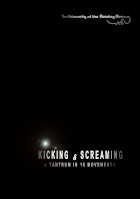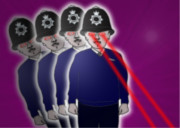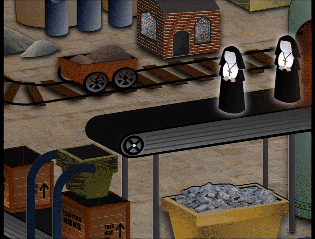Space Stationery
There will be jubilations aplenty in Leicester next month when NASA's unmanned Spacefarer IV probe touches down on the rocky surface of Mars. British company Space Mail UK has played a crucial role in the multi-billion dollar mission and staff and bosses will be celebrating in style.
"It's a good feeling to be part of a team that is pushing forward the boundaries of human endeavour and forging a new understanding on the frontiers of science," says managing director Steve Stevenson. "It really was a great honour for our company to be chosen to undertake this challenging task: supplying the stationery for this exciting project."
For commercial reasons the exact value of the contract has not been made public, but it is thought that it could be as much as £70 to £75, assuming that the order is for both letter-headed paper and envelopes - more, if the envelopes are those ones with the little windows in them.
Minister for Business, Chris Christopher, has been quick to highlight this success story, calling it a 'giant leap' for business, reaffirming that Britain is still a force to be reckoned with when it comes to technology and innovation.
But how does the stationery work? Space Mail UK's head of research and technology, Dr John Johnson, explained. "What we have developed is essentially a two stage system, consisting of a unique letter-envelope combination," he told us. "The letter contains the message, or payload, which is housed within the protective envelope, the two elements being assembled at mission control prior to launch. A special heat-resistant coating applied to the envelope means that it can survive the rigours of most postal systems. It has the potential to be delivered to any destination on the planet, even circle the globe without suffering too much damage - what the boffins refer to as a 'geo-stationery orbit'."
Space Mail UK has commissioned an animation demonstrating how the system is expected to perform once it reaches the target area. On arrival at the destination the envelope is jettisoned, the letter unfolds and the message is delivered. That's the theory anyway, but an unnamed insider told us that the company experienced several problems with early prototypes. Our source told us that a number of letters went wildly off target and there was even one incident of an envelope catching fire mid-journey and seriously injuring a postman in Chiswick. Understandably then, there will continue to be some anxiety until the stationery has been proven in a real world environment. After all, there is a lot riding on this mission, including the possibility of a major order for business cards from the Atomic Energy Commission and a potential shipment of paperclips to CERN.
Anyway - 'geo-stationery'. Get it? Oh, never mind.




















 Medieval Castles
Medieval Castles Shark Fishing
Shark Fishing Dougal Fridgely
Dougal Fridgely Darrens on the Decline in Essex
Darrens on the Decline in Essex Special Powers
Special Powers Sci-Fi Fan Draws a Blank
Sci-Fi Fan Draws a Blank Obvious Records
Obvious Records Announcing the iSpong
Announcing the iSpong National Consumer Instructions Awards
National Consumer Instructions Awards UK Government to Sell North Sea?
UK Government to Sell North Sea?


